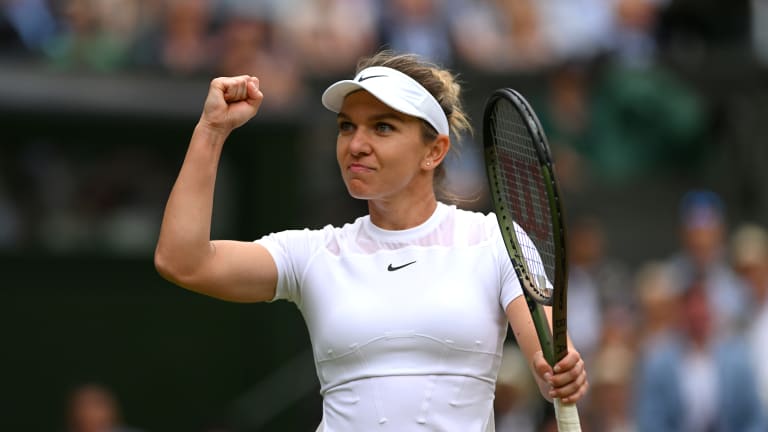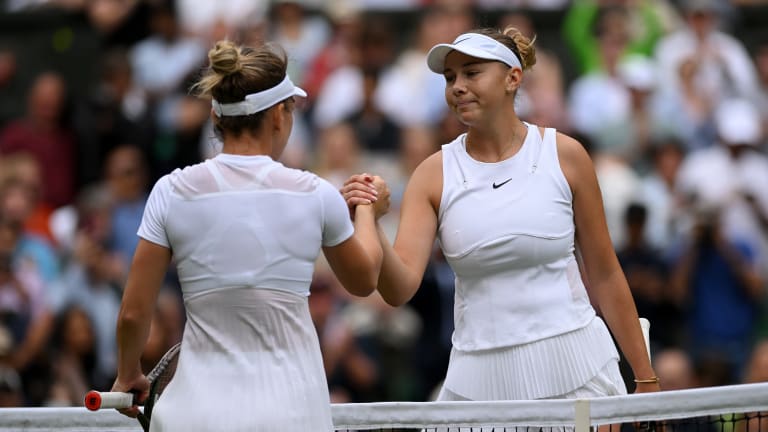Wimbledon
Simona Halep notches 12th straight Wimbledon win after tallying six unforced errors in dismissing Amanda Anisimova
By Jul 06, 2022Wimbledon
Wimbledon to replace line judges with electronic line calling from 2025
By Oct 09, 2024Wimbledon
The amazing journey of Henry Patten from IBM data logger to Wimbledon doubles champion
By Jul 16, 2024Wimbledon
Hsieh Su-Wei, Jan Zielinski win mixed doubles title at Wimbledon
By Jul 15, 2024Wimbledon
Why Wimbledon Endures
By Jul 15, 2024Wimbledon
Novak Djokovic seeks 2024 answers for Alcaraz and Sinner after great effort: 4 ATP Wimbledon takeaways
By Jul 14, 2024Wimbledon
Carlos Alcaraz is a champion establishing how high he will climb with latest Wimbledon title
By Jul 14, 2024Wimbledon
Nicolai Budkov Kjaer makes history in winning junior boys' Wimbledon title; Renata Jamrichova wins girls' title
By Jul 14, 2024Wimbledon
Carlos Alcaraz beats Novak Djokovic again in Wimbledon final for fourth Grand Slam title
By Jul 14, 2024Wimbledon
For Jasmine Paolini, Barbora Krejcikova was one forehand and one serve too good in the Wimbledon final
By Jul 13, 2024Wimbledon
Simona Halep notches 12th straight Wimbledon win after tallying six unforced errors in dismissing Amanda Anisimova
The Romanian fought off a late push from the American to reach her third semifinal at SW19 with a 6-2, 6-4 victory Wednesday.
Published Jul 06, 2022
Advertising
Advertising

Halep is yet to drop a set in her return to the final four.
© Getty Images
Advertising

“I don't really like playing not to the fullest of my abilities,” said Anisimova, “especially in such a packed stadium. It's very disappointing for me."
© Getty Images